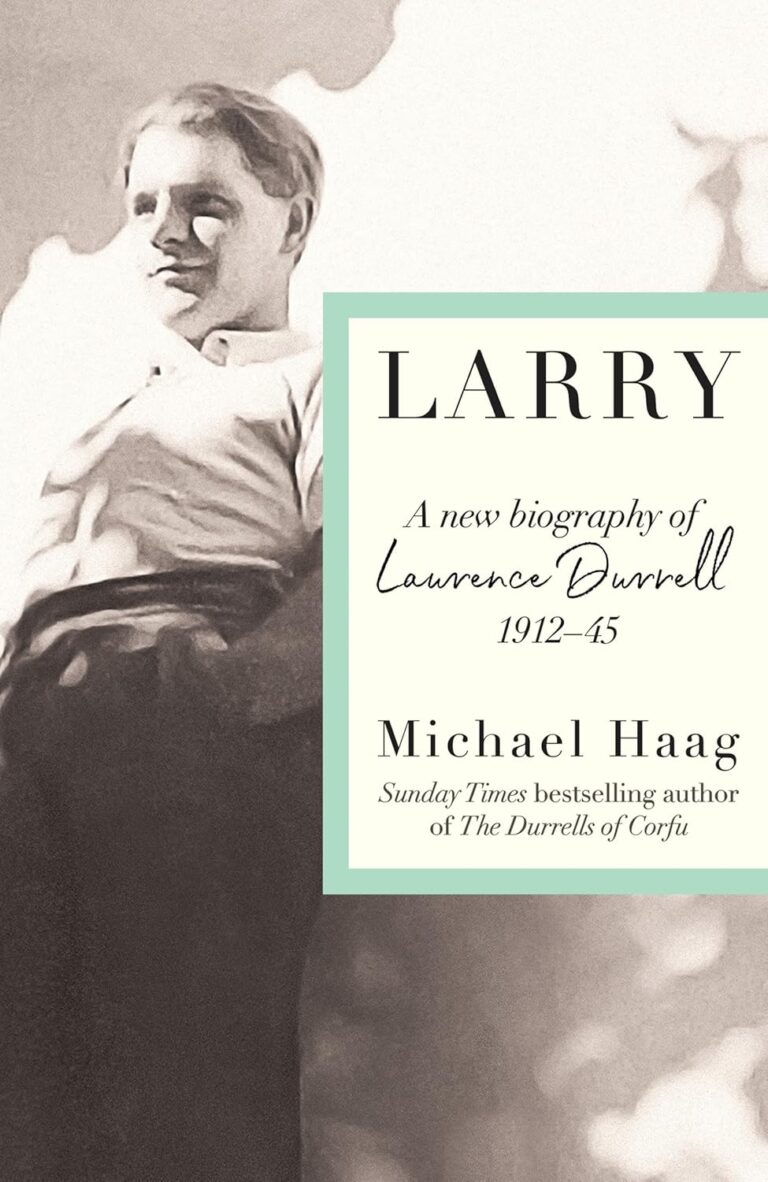Literary stature doesn’t always walk hand in hand with physical height. Martin Amis was 5ft 6in. J.M. Barrie was 5ft 3in. But Lawrence Durrell was even smaller, rising to just 5ft 2in in his stocking feet. The author of The Alexandria Quartet was “short and thick-set”, his first wife Nancy recalled. He was “small”, confirmed his second wife, Eve. It wasn’t easy for Larry, who flew into a rage if Nancy, who was 5ft 8in, spent time alone in a room with a man who was taller than he was.
Apart from ominous hints, such as referring in his novel Justine to men “who have been deeply wounded in their sex”, Larry doesn’t dwell on concerns about his height in his fictional oeuvre, although the Quartet is filled with jealous characters. And as with many literary biographies, one of the great pleasures of this one by Michael Haag lies in tracing the relationship between truth and art—including supposedly factual presentations of Larry’s life in his own writing, and in his brother Gerry’s knockabout account of their life on Corfu in the mid-1930s.
According to My Family and Other Animals, the Durrells moved to Greece because they were sick of the English weather. The reality was darker, as Haag reveals here, and it reflects a lot better on Larry. His widowed mother Louisa had had a breakdown a couple of years earlier, during which she had even booked tickets to run away to India, taking the seven-year-old Gerry but abandoning the teenage Leslie and Margo. She was also an alcoholic. Larry, the man of the family since the age of 16, simply couldn’t leave her in England to look after his siblings alone.
It’s understandable that he doesn’t mention all this in Prospero’s Cell, his own memoir of those halcyon years. Yet that book’s omissions are still striking. He doesn’t mention, for instance, that the local priest took exception to his and Nancy’s nude sunbathing and got local boys to throw stones at them. He doesn’t mention their marital rows. He doesn’t mention his mum, living up the road. When he says dramatically that they left on the very day that Britain declared war on Germany, it was a fib. They had upped sticks a few days earlier.
Larry’s complicated relationship with the truth continued when Nancy left him in 1942. “My wife is being rather a nuisance at the moment,” he wrote disingenuously to T.S. Eliot, who was his editor at Faber. “She’s gone up a tree; she won’t come down,” he told Eve, who was to take Nancy’s place. Finally, he admitted to his friend Henry Miller, “We have split up; just the war I guess.”
Was it just the war? Or was it also Larry’s huge self-regard and sacrifice of himself and others in his lifelong quest to become a great writer? A quest in which, incidentally, he succeeded. In 1938, Eliot described Larry’s novel The Black Book as “the first piece of work by a new English writer to give me any hope for the future of prose fiction”. In 1961, shortly after the publication of the Quartet, the critic George Steiner said the novelist represented “the best hope” for saving literacy itself. He was nominated 11 times for the Nobel prize.
Larry himself believed that a kind of lying was the task of the artist. One of the many strengths of this superb biography is its exegesis of his belief in the “Heraldic Universe”: the label he gave to an artistic escape from logic, with, in Haag’s phrase, “its ruthless dualities of either/or, its conflict of opposites”. Larry mystified in order to mesmerise. Gobbledegook, some of it, but pure poetry at its best—which, for my money, includes Prospero’s Cell, a timeless evocation of a state of being that may very well be the answer.
Haag’s is a curious book. Unfinished when he died five years ago, his biography of Larry was to be his magnum opus. It remains a major achievement, even though it cuts out in 1945 when Larry, who lived to be 78, was only 33. Yet by then he had written The Black Book and Prospero’s Cell and conceived the ideas that would develop into the Quartet. The prose style of the biographer is as quiet and self-effacing as Larry’s is bombastic and insistent. It serves its subject well. By the end of its almost 500 pages, you feel you know the man, which is as much as any biographer can hope for.

